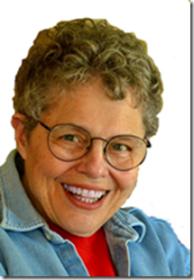 Consider This
Consider This
By
LC Van Savage
Put A Band-Aid On That!
If you love trivia and the history of minutiae as I do, then you’ll love reading Mark Pendergast’s books on, amongst other things, the history of Coca-Cola, coffee and mirrors. I interviewed him for a magazine article and the man is fascinating. He takes things we never think much about and writes big, thick engrossing books on them. He’s a freak for research. Trust me, his books are compelling reading. Try one.
I’m no Mark P. and this will only be a column and not a thick tome, but I do love to write about the history of stuff and today, because it’s winter and my cracked thumbs are covered with them, I’m going to write about the history of Band-Aids. OK, maybe that’s not as irresistible as the history of mirrors, but pretty much. Here’s the scoop:
In 1920, Earle and Josephine Dickson were newly married and living in New Brunswick, NJ. Now, our Josephine was no fool; she played the klutz card and managed to cut and burn her dainty little hands every time she prepared meals. So instead of taking over the cooking chores as she’d schemed for, cagey husband Earle did the next best thing; he invented bandages (back then called “plasters,”) for her poor bloody hands. He took some surgical tape, put a small gauze pad on it and a little crinoline and voila! Josephine was busted, her hands patched, she stopped bleeding into the soup and went back to cooking. Pouting.
But way long before Josephine tried to get out of cooking, combinations of mud and grass were the bandages du jour. Eeuw. A long, long time later, one Dr. Joseph Lister (yes, that Lister) suggested a bit more sanitary approach and invented carbolic acid soaked, boiled, and re-used rags for patients’ wounds. Lots easier to deal with than that mud mixture, although those rags hanging on the inside clotheslines---nasty.
But before all that, in 1876 a guy named Robert Woods Johnson (yes, that Johnson) decided to educate people about germs and other grossnesses by pushing cleanliness and covering minor wounds with sterile bandage materials, suggesting that even non-medical people could help minor wounds to heal. He soon found himself on the happy path toward billionairhood.
But, remember Earle Dickinson? Wow, talk about serendipity; he was employed by the fledgling Johnson and Johnson Co.! So when his co-workers heard him tell how he kept sweet Josephine confined to the kitchen with her patched up hands, they suggested he take the bandage idea to J&J Management. He did and the company’s president instantly saw its potential. Made by hand at 3” wide by 18” long, customers would cut off what they needed, and a mill superintendent named W. Johnson Kenyon named the thing “Band-Aid.”
They didn’t catch on too quickly. They were given to local Boy Scouts, butcher shops and were touted, truthfully, as being sterile and would therefore help to prevent infection, but it took a while. They were made smaller to be more easily stored in medicine cabinets. J&J learned how to market the product. Anyone remember seeing a Band-Aid stuck on an egg submerged in boiling water? Remember the red string used to pull the covering open?
Competition grew; Curad; then decorated Band-Aids for kids. The industry grew. Can you imagine life without Band-aids? I can’t. I have them in my car, my purse, everywhere. I’m a bleeder. Like Kleenex, Scotch Tape and Xerox, the name “Band-Aid” has become generic for all “plasters,” even those not made by Johnson and Johnson.
Earle Dickson, the guy who invented early Band-Aids for sweet Josephine, retired from J&J in 1957. He’d been a VP since 1932 and on the Board of Directors since 1929, proud that his invention saved lives and prevented infections. There’s no word on whether Josephine figured out some other way to get out of cooking.
Hear LC on “Senior Moment”
with partner Dave Wilkinson,
WBOR-AM – 91.1.
Or on
http://www.studorgs.bowdoin.edu/wbor.
Email her at lc@vansavage.com
|